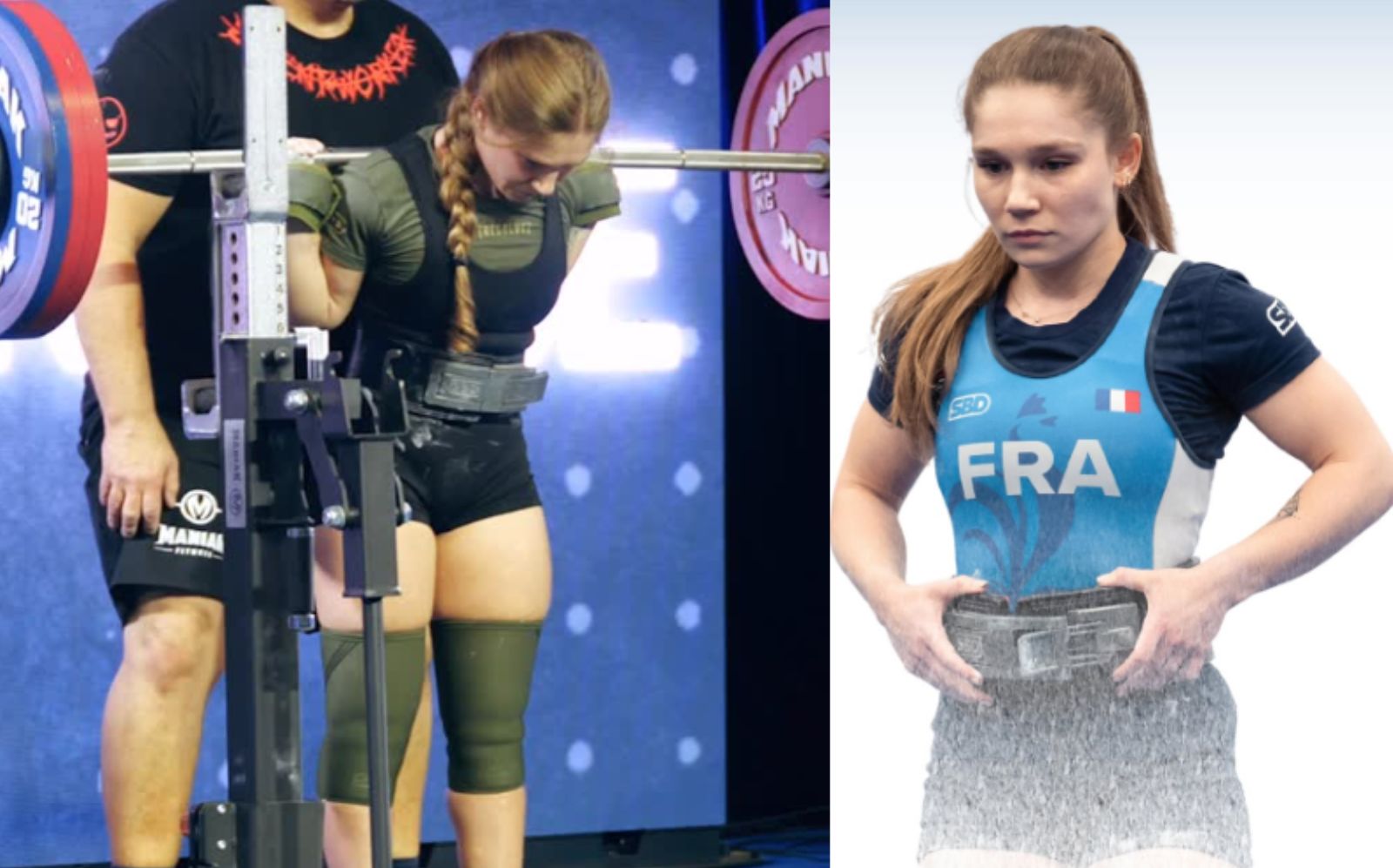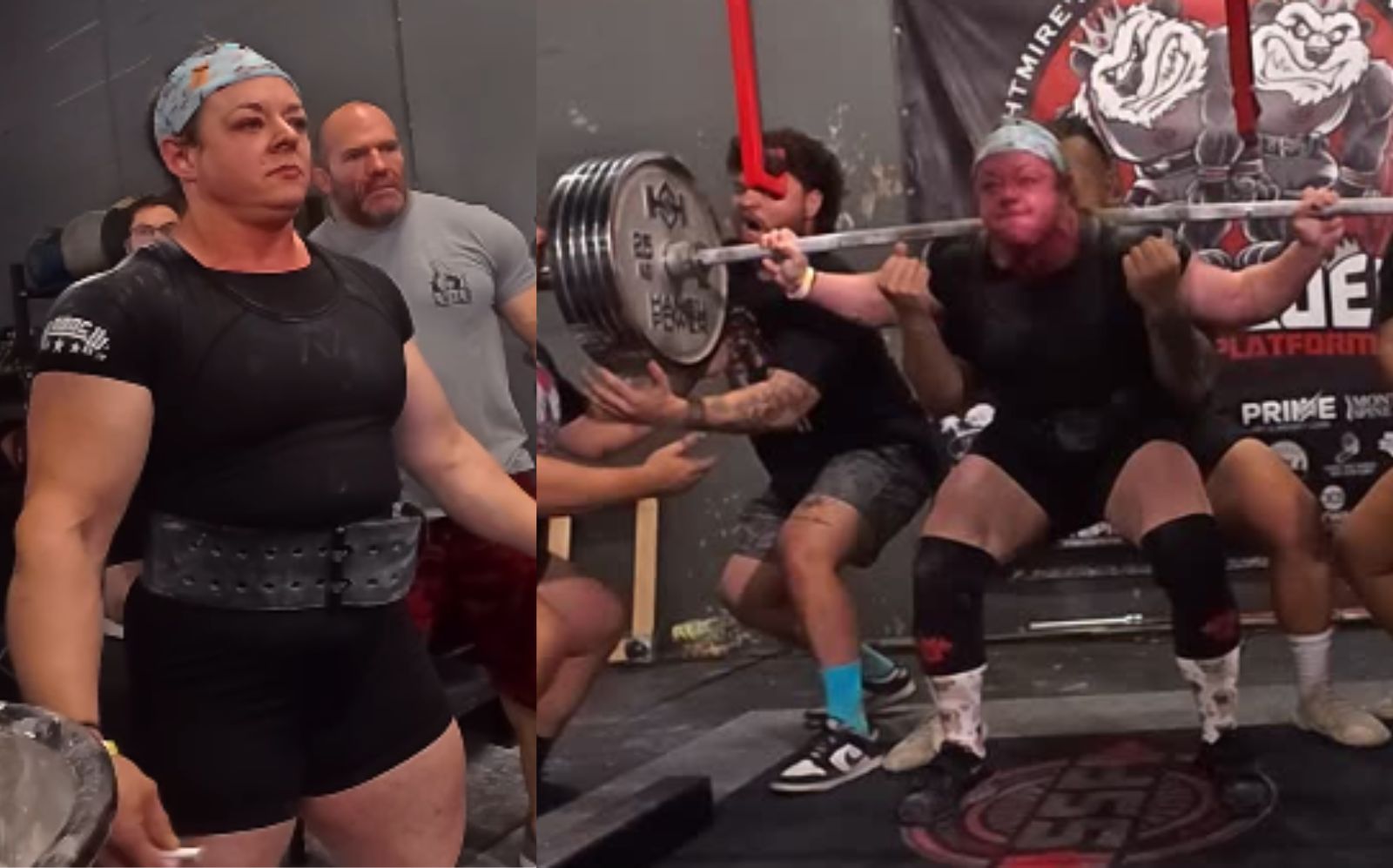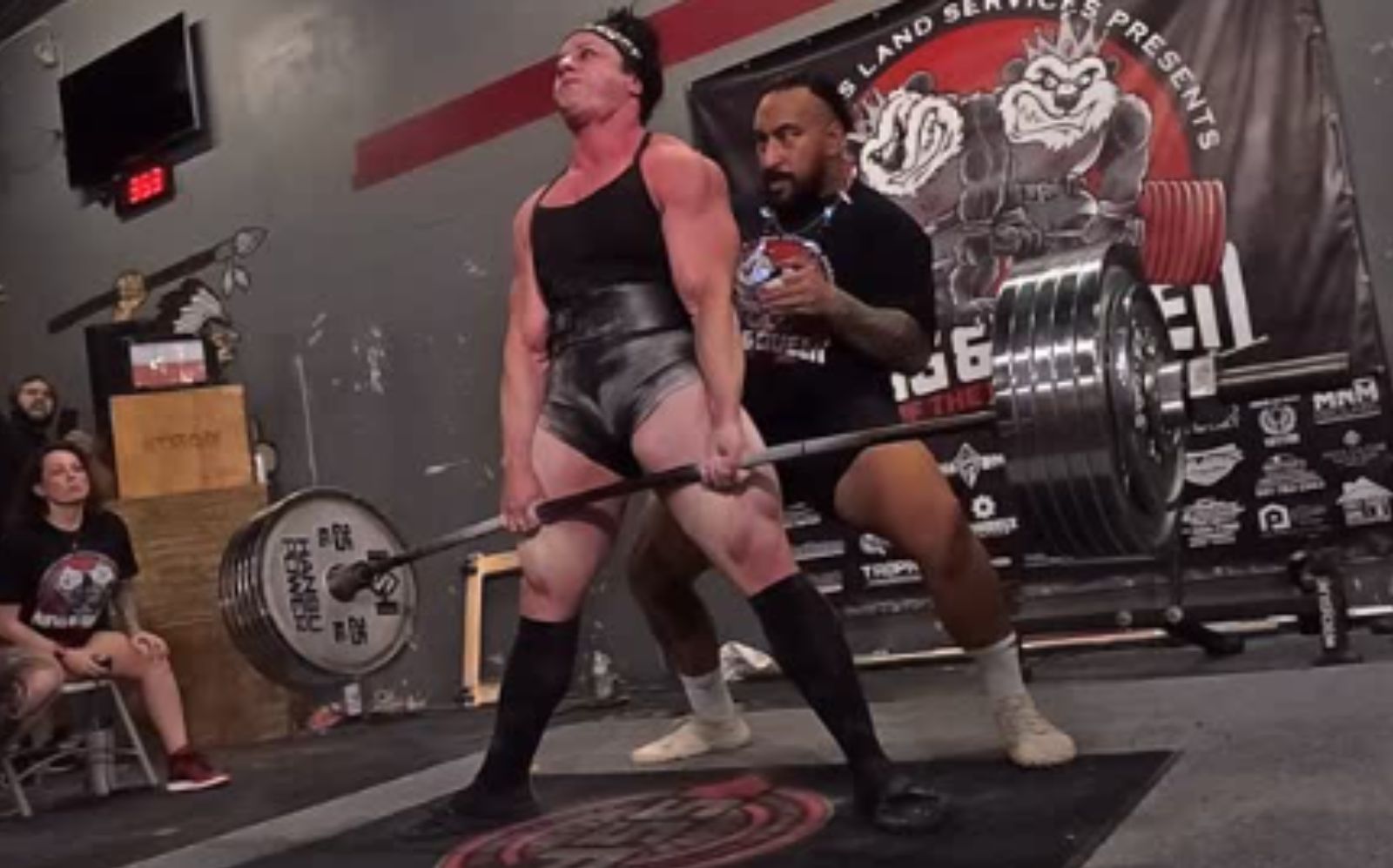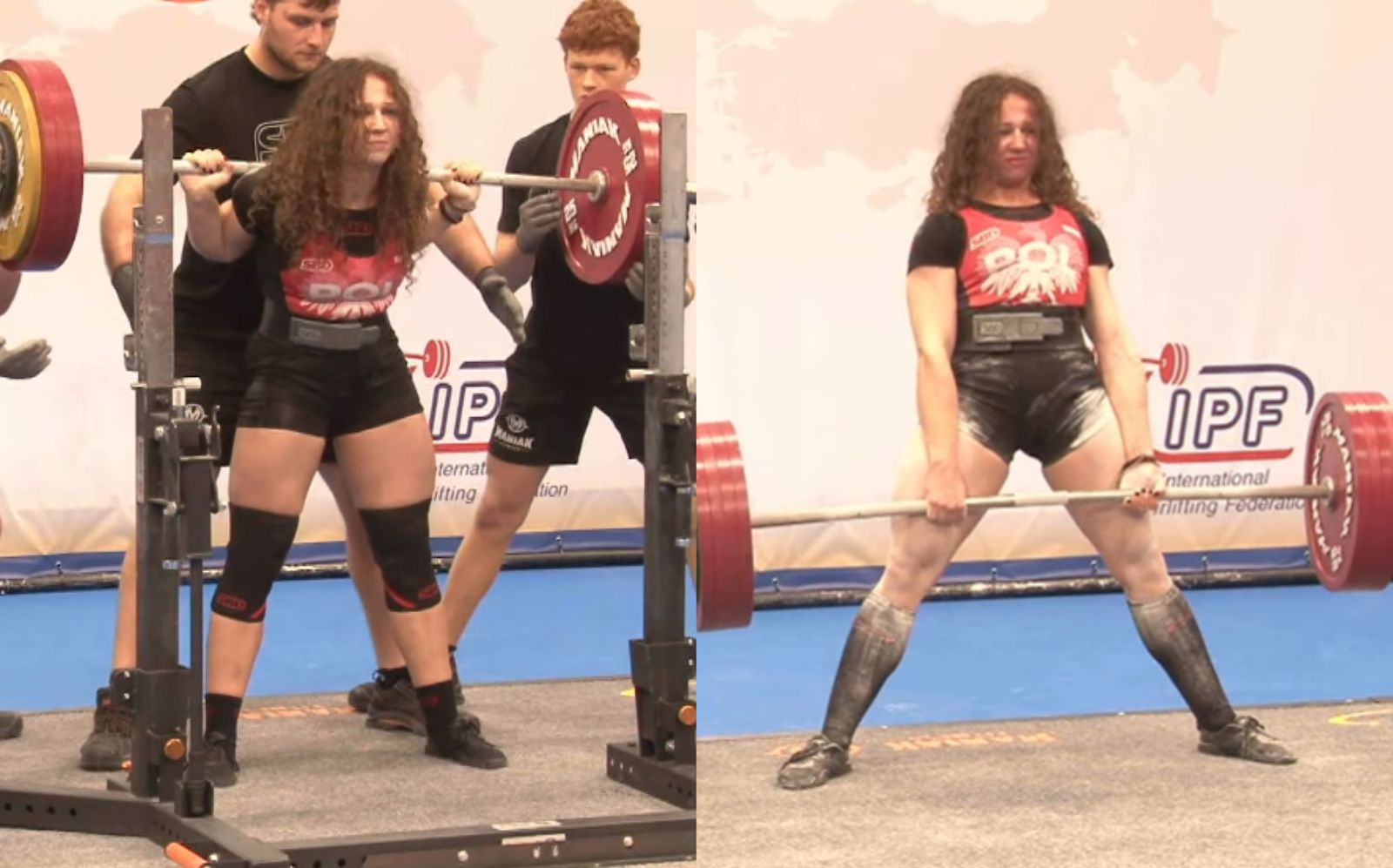Picture this: You are in the gym, hitting the same weights, the same reps, the same old routine but the mirror tells a stubborn story — no gains.
This was exactly my story. As a personal trainer with over 17 years of lifting experience, I knew I had to make a big change. This is when I turned to the venerable 5×5 strength training method.
The 5×5 method, also known as the “Strong Lifts 5×5,” is one of the most popular powerlifting training protocols, which involves performing five sets of five repetitions for key compound exercises.
In this article, I take you over my four-week 5×5 strength split challenge and share the improvements in raw strength and workout efficiency, if any. I also share tips on how you can adopt this experiment in your own routine. We have a lot to unpack, so sit tight and read on.
Understanding the 5×5 Method

The structure of the 5×5 program makes it suitable for lifters of varying experience levels.
Level Up Your Fitness: Join our 💪 strong community in Fitness Volt Newsletter. Get daily inspiration, expert-backed workouts, nutrition tips, the latest in strength sports, and the support you need to reach your goals. Subscribe for free!
Five sets of five repetitions sound pretty simple, right? However, the devil’s in the details.
Like any other strength training program, progressive overload is the cornerstone of the 5×5 protocol. The goal is to build strength by adding weight to the bar in every successive workout.
The 5×5 protocol usually involves training three times a week to ensure optimal recovery between workouts. The main barbell movements in this program comprise:
- Back squat
- Bench press
- Deadlift
- Overhead press
- Barbell row
Don’t worry you don’t have to perform all these lifts in the same workout; that would be overkill. You’ll do three of these movements in each session to maximize muscle stimulation and subsequent adaptations.
Nonetheless, barbell back squats are included in every workout while other exercises cycle on a weekly basis and are performed either once or twice per week.
Plus, deadlifts are an exception to the strict 5×5 protocol as you’ll only do one set of five reps. Experts believe heavy deadlifts are one of the most demanding exercises and doing too many sets of it each week can increase the risk of overtraining and injury.
You perform the deadlifts towards the end of each workout to avoid fatiguing the core, which can hamper your performance in the other compound exercises.
Besides helping you maximize your strength gain potential, this training protocol can also lead to incredible muscle gains and improved athleticism.
Sample 5×5 Weekly Training Routine
I cycled between two weekly workouts over the month to keep things exciting and avoid monotony. Here is what my routine looked like:
Week One
Remember, we will be squatting in each workout and must structure the remainder of the workouts to ensure we are targeting each muscle group optimally for overall development.
Workout A (Monday & Friday)
I did this workout every Monday and Friday. Plus, instead of turning into a couch potato on the rest day, I went for a 20-minute hike or outdoor walk. Research suggests active recovery techniques can promote recovery compared to staying sedentary on rest days. (3)
| Exercises | Sets | Reps | Rest Duration (Minutes) |
| Barbell Back Squat | 5 | 5 | 3-5 |
| Barbell Bench Press | 5 | 5 | 3-5 |
| Barbell Row | 5 | 5 | 3-5 |
Workout B (Wednesday)
I like to squat first thing in the workout and the deadlifts are supposed to be the last exercise, so there were very few adjustments I could make. It might take you some time to adjust to this routine if you’re unfamiliar with this flow, but you’ll eventually get accustomed to it.
| Exercises | Sets | Reps | Rest Duration (Minutes) |
| Barbell Back Squat | 5 | 5 | 3-5 |
| Barbell Overhead Press | 5 | 5 | 3-5 |
| Barbell Deadlift | 1 | 5 | 3-5 |
Week Two
I basically flipped the workouts in the second week to ensure equal volume distribution for each muscle group. I was now doing deadlifts and overhead presses twice weekly and bench pressed and rows once.
Workout A (Monday & Friday)
As you start increasing the poundage on each exercise, spend more time warming up to ensure your muscles, tendons, and connective tissue are ready to handle the additional demands.
| Exercises | Sets | Reps | Rest Duration (Minutes) |
| Barbell Back Squat | 5 | 5 | 3-5 |
| Barbell Overhead Press | 5 | 5 | 3-5 |
| Barbell Deadlift | 1 | 5 | 3-5 |
Workout B (Wednesday)
It is absolutely normal if you are unable to increase the weights in each session. Instead, push yourself by focusing on using a picture-perfect training form and modifying your rep tempo.
| Exercises | Sets | Reps | Rest Duration (Minutes) |
| Barbell Back Squat | 5 | 5 | 3-5 |
| Barbell Bench Press | 5 | 5 | 3-5 |
| Barbell Row | 5 | 5 | 3-5 |
Prep Routine & Rest Periods
When the goal is to lift as heavy as possible in some of the most demanding compound barbell lifts, you shouldn’t expect yourself to fly through these workouts. Getting adequate rest between sets can make or break your workout.
Although experts recommend resting anywhere between 2-3 minutes between sets, feel free to rest for longer if you think you need more time to recover. This will allow your ATP store to replenish and help you push yourself to the limit in each set.
Coach Tip: Consider starting creatine supplementation if you’re struggling with interset recovery, as it can help boost ATP replenishment.
Planning and Preparation For the 5×5 Routine
To get the most out of this 5×5 powerlifting regime, you must know your one-rep maximum (1RM) for each exercise.
If you are unaware of your 1RM’s, I would advise against putting yourself under a heavy barrel to test your limits. Instead, use this accurate 1RM Calculator to determine your ideal working weights for this program.
Level Up Your Fitness: Join our 💪 strong community in Fitness Volt Newsletter. Get daily inspiration, expert-backed workouts, nutrition tips, the latest in strength sports, and the support you need to reach your goals. Subscribe for free!
Most experienced lifters use 70 to 80% of their 1RM for the working sets in the 5×5 program, and I was no different.
Prioritize Form
Although the goal is to lift as heavy as possible during these 5×5 sets, you should never overlook your training form. Lifting with a sloppy technique limits muscle fiber recruitment and significantly increases the risk of getting hurt.
Furthermore, begin each workout with a 5-10 minute warm-up routine comprising light cardio or dynamic stretches. Similarly, finish with a cool-down routine involving static stretches to flush the metabolites out of your muscle tissues and promote recovery. (1)
The 5×5 protocol primarily includes barbell exercises as they allow the most overall weight to be lifted, which is the ultimate objective of a powerlifting program. Most barbell exercises are compound movements that target multiple muscle groups at the same time, maximizing target muscle activation and improving overall functionality and athleticism. (2)
Week 1: Embracing the Basics
Since I was coming from a hypertrophy-focused training program, the first week of the 5×5 routine was simply brutal.
To be honest, the workouts are pretty straightforward as there are no fancy isolation movements or complex supersets. The sheer volume even at moderate rates accumulates fast.
Notably, my workout efficiency improved considerably as I spent less time wandering between machines and more time under the bar.
Since I was only performing a few reps per set, I prioritized a full range of motion to maximize target muscle stimulation and growth. I also experienced considerable delayed onset muscle soreness (DOMS) by the end of the three workouts and sticking with the proper form became a challenge, but I persisted.
Role of Nutrition
Irrespective of how hard you train in the gym, you won’t see the desired results until you are giving your body enough time to recover and eating a balanced diet to fuel your strength and muscle gains.
Experts recommend aiming for at least 1 gram of protein per pound of body weight to fuel your muscle repair and growth. Use this convenient total daily energy expenditure (TDEE) calculator to determine your ideal nutrient goals.
Week 2: Finding the Rhythm
Once the initial shock of this new program had subsided, it was time to step on the gas.
I gradually increased the weight on each lift while making sure there was no ego lifting involved. I was also very mindful of my form during these workouts and taped a few of my sets to ensure a correct technique.
Surprisingly enough, I felt the bar move with greater ease in just the second week, which boosted my confidence.
Since powerlifting programs are about pushing yourself to the limit in each set, I highly recommend training with a spotter to limit the risk of injury. They can also help keep you accountable and boost your motivation.
I noticed an improvement in my overall recovery, resulting in better sleep, focus, and mood. This was a clear sign that my body was adapting to the new demands being placed on it.
Week 3: Pushing Past Plateaus
I always tell my personal training clients that the third week of a new training program is when you should be the most vigilant, as the chances of hitting a plateau are at their highest.
Strength and muscle plateaus are a part and parcel of weight training. Instead of trying to do too much too soon, you should focus on incremental gains. In the third week, I focused on adding the smallest possible weights to the bar, I’m talking about 1.25-pound plates.
Strategic Deloading
I also used the third week to deload so I could push myself even harder during the final phase of this training regime. Don’t overlook the importance of mental fortitude and focus during your workouts. Prioritize a deep mind-muscle connection to enhance muscle recruitment and adaptations.
Workout Efficiency
As someone who usually spends over an hour in the gym daily, switching to this 5×5 strength split routine was a big revelation as I stormed through my workouts in 45 minutes, tops. As your body starts adapting to this new routine, these workouts can become the most effective, especially for people with tight schedules.
Week 4: The Final Stretch and Results
I don’t know about you, but the final week of a new training program gets the best out of me. This week, I did not just lift; I attacked the weights.
Let’s now get into the specifics of my strength gains:
| Lift | Starting Weight (lbs) | Final Weight (lbs) | Gain (lbs) |
| Squat | 225 | 255 | 30 |
| Bench Press | 185 | 205 | 20 |
| Deadlift | 275 | 315 | 40 |
| Overhead Press | 115 | 130 | 15 |
| Barbell Row | 155 | 175 | 20 |
My strength gains were undeniable. The 5×5 protocol delivered on all its promises. Furthermore, I also noticed a significant improvement in my body composition as my muscle definition and vascularity improved.
Although I did not lose a ton of belly fat, I added some serious muscle mass on my traps, and my quads definition improved.
Remember, strength gains don’t happen overnight and you shouldn’t expect to add 50 pounds to your squat within a month. My goal was to see consistent, small improvements in each lift with a realistic expectation to add 5 to 10 pounds to the main exercises.
Setting overly ambitious goals can lead to a loss of motivation and put you at risk of injury.
Conclusion
The 5×5 program is designed to push you to your limit to achieve incredible strength gains. I had no clue what to expect from this program when I started. However, the strength gains and the workout efficiency have made me one of the biggest proponents of this split.
Like any other training program, consistency, discipline, and patience are vital for achieving your strength goals in this program. Start small and stick with it, and you’ll be rewarded for your efforts.
References:
- Ortiz RO Jr, Sinclair Elder AJ, Elder CL, Dawes JJ. A Systematic Review on the Effectiveness of Active Recovery Interventions on Athletic Performance of Professional-, Collegiate-, and Competitive-Level Adult Athletes. J Strength Cond Res. 2019 Aug;33(8):2275-2287. doi: 10.1519/JSC.0000000000002589. PMID: 29742750.
- Myer GD, Kushner AM, Brent JL, Schoenfeld BJ, Hugentobler J, Lloyd RS, Vermeil A, Chu DA, Harbin J, McGill SM. The back squat: A proposed assessment of functional deficits and technical factors that limit performance. Strength Cond J. 2014 Dec 1;36(6):4-27. doi: 10.1519/SSC.0000000000000103. PMID: 25506270; PMCID: PMC4262933.
- Ortiz RO Jr, Sinclair Elder AJ, Elder CL, Dawes JJ. A Systematic Review on the Effectiveness of Active Recovery Interventions on Athletic Performance of Professional-, Collegiate-, and Competitive-Level Adult Athletes. J Strength Cond Res. 2019 Aug;33(8):2275-2287. doi: 10.1519/JSC.0000000000002589. PMID: 29742750.











